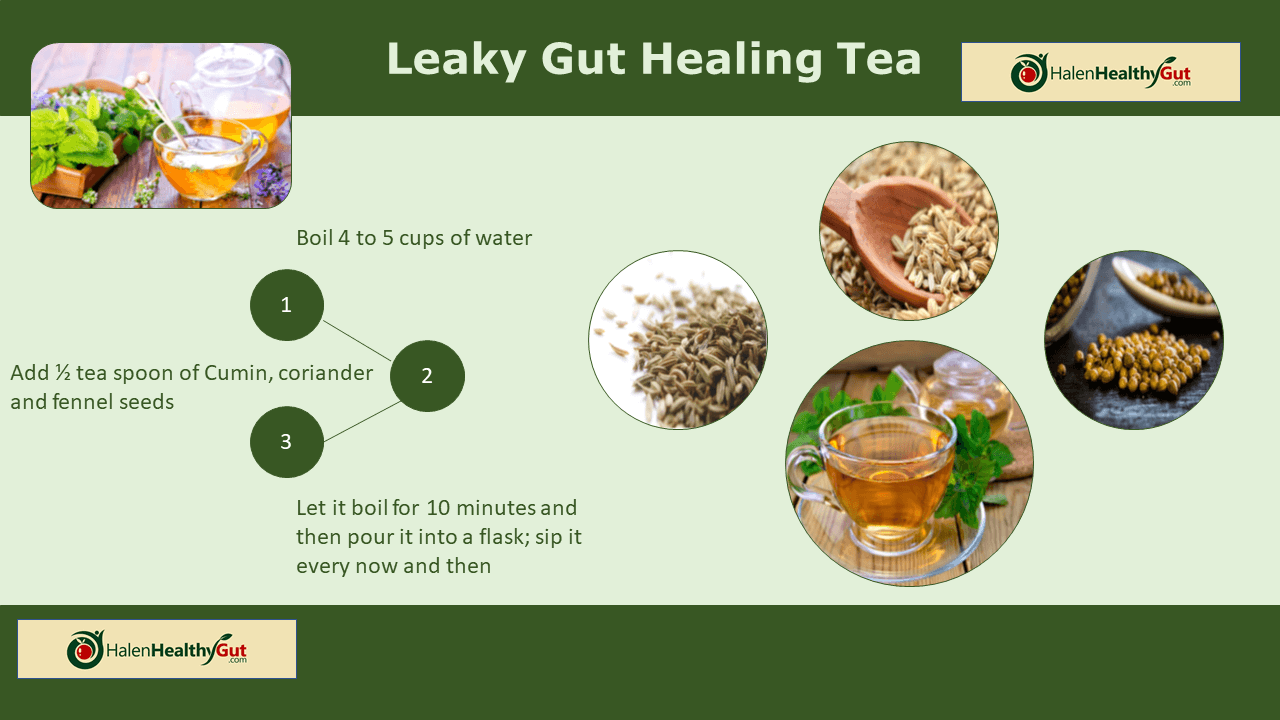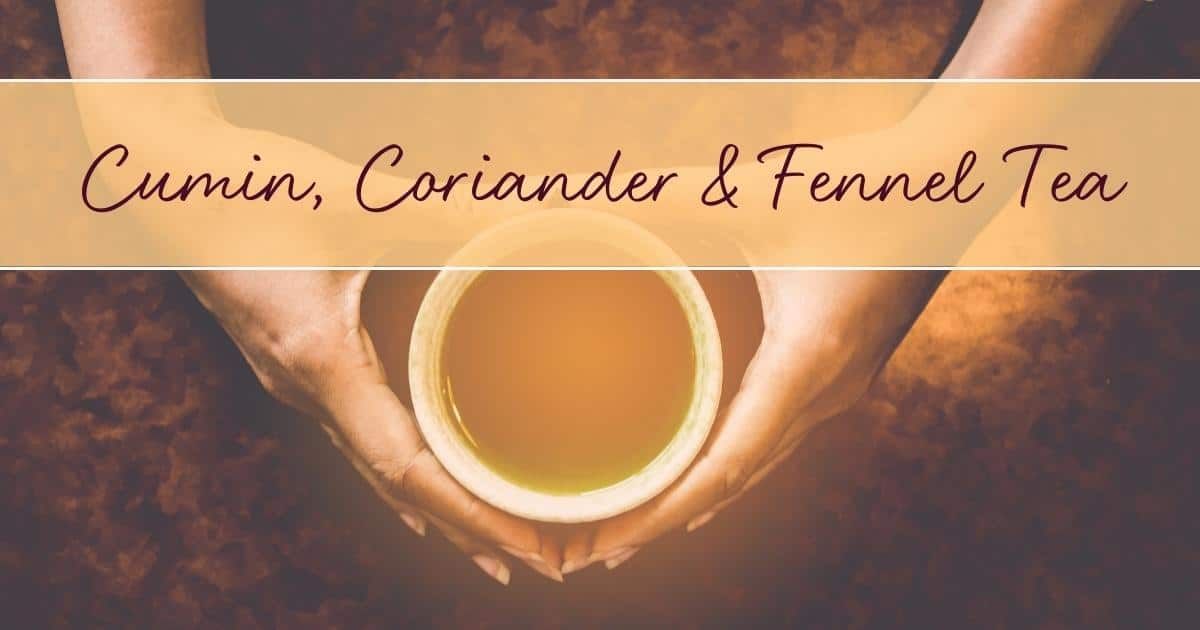Leaky Gut Healing Tea
Leaky Gut Tea, an Excellent Companion to the 3Rs Total Gut Restoration

Leaky gut is usually caused by an over growth or candida like pathogens in the colon. The greater numbers of fungal organisms will punch holes in our large intestine and this causes undigested food to seep through and this gets into our blood stream. In the undigested form these fats and proteins are actually toxic to our system and our body will react to them and cause allergic inflammation.
Several critical factors should be noted. One is we have to find a way to repair our gut lining. Two we have to lower the number of those pathogenic organs that cause heal our gut.
The Role of Soothing Slimer Herbs in Gut Healing
To support healing the gut lining and manage inflammation, I often recommend using "soothing slimers"—a quirky name for a powerful group called mucilaginous demulcent herbs. These aren’t a new fad; many cultures have brewed these slimy wonders for centuries to calm the digestive system.
What makes them special? When steeped in water, these herbs release mucilage, a thick, gel-like substance. Think of it as a natural balm that coats and protects your gut wall, helping minimize irritation and giving your tissue a chance to repair.
Slippery elm was once the gold standard in this category, prized for its silky feel and gut-soothing effects. However, with slippery elm becoming harder to source (we really should give those trees a break), marshmallow root steps in as a cost-effective and widely available alternative. Not only is it gentle on the gut, but its mild flavor makes it pleasant to sip, even if you’re not normally an herbal tea fan.
Licorice root also makes the list, delivering both demulcent and antimicrobial effects. It deserves a little caution: the standard variety can impact hormone balance and blood pressure, so stick to small doses or look for “deglycyrrhizinated” licorice (DGL) for a safer option.
Don’t overlook plantain leaf, violet leaf, and cinnamon bark; these can work beautifully in your own tea blends for their mucilage content and soothing action. They’re especially helpful if you’re dealing with ulcers, heartburn, or other signs your gut lining needs some TLC.
Inside the Soothing Blend: A Closer Look at Key Herbs
Let’s break down some of the all-stars you might find in a gut-healing tea blend:
- Marshmallow Root (Althaea officinalis)
Renowned for its potent anti-inflammatory and soothing properties, marshmallow root releases a rich mucilage that calms and protects irritated tissue. This gentle root doesn’t just coat your gut—it’s like a botanical bandage, giving your digestive lining a much-needed break from daily irritants. - Chamomile Flowers (Matricaria recutita)
Chamomile isn’t just for sleep—its anti-inflammatory effects also help soothe the digestive tract, making it a gentle addition for sensitive stomachs. A cup of chamomile tea can settle discomfort and bring a little calm to both your nerves and your gut. - Calendula (Calendula officinalis)
This sunny flower supports the health of mucous membranes and encourages tissue repair—important when you’re patching up the gut lining. Calendula’s gentle touch helps speed up recovery, making it a favorite for anyone dealing with persistent gut irritation. - Plantain (Plantago major)
Not to be confused with the banana-like fruit, plantain leaf is a microbiome-balancing herb packed with mucilage, making it ideal for gut support. It helps restore microbial harmony while lending a soothing coat to inflamed tissue. Think of plantain as a peacekeeper for your digestive tract, calming things down while helping your inner ecosystem thrive. - Ginger Root (Zingiber officinale)
Known for its warming zing, ginger brings anti-inflammatory power to the table, supporting not just the gut but also the liver and respiratory system. Its gentle heat not only soothes cramping and nausea, but also encourages healthy digestion and circulation—making it a true multitasker in gut blends.
These herbs work in harmony to deliver a blend that soothes, repairs, and restores balance to your digestive system, whether you’re dealing with everyday discomfort or mending a more irritated gut lining.
Feel free to experiment with your own blends using these herbs, combining their unique strengths for a soothing cup that helps your gut on the road to recovery.
A quick tip if you’re making these teas: mucilage takes its sweet time to extract—plan on soaking herbs in warm or cold water for several hours (sometimes as long as seven) to get the most benefit. But once you have that rich, gooey infusion, your gut will thank you.
The good news is there are solutions available and I have told you about the 3Rs. It is an easy three-supplement, three-month regimen could restore your gut? This is the
What Does Leaky Gut Tea Taste Like?
If you’re curious about the flavor profile of a leaky gut tea, imagine a cup that’s both soothing and gently complex. The base notes are mellow and mildly sweet from marshmallow root, supported by earthy undertones courtesy of plantain and calendula. There’s often a floral, apple-like lift coming from chamomile, with a comforting warmth that ginger brings to round it all out.
You won’t find an overpowering taste here—think delicate, refreshing, and balanced, with just a hint of spice from ginger lingering at the end. It’s a blend that supports your gut without offending your taste buds, making it easy to enjoy both hot or iced as part of your daily routine.
Chamomile Flowers: Gentle Calm for the Gut
Chamomile (Matricaria recutita) is one of those classic herbs your grandmother probably trusted think bedtime teas and calming remedies. But its benefits go far beyond simple relaxation. In gut-healing teas, chamomile shines for its ability to ease irritation and calm digestive discomfort.
What sets chamomile apart? It brings a gentle, anti-inflammatory touch, helping to soothe an inflamed gut lining and quiet the kind of tension that often leads to bloating or cramping. If your gut feels reactive, or if you’re dealing with stress-related digestive issues, chamomile can act like a comforting hand, easing the body back toward balance.
Its mild, naturally sweet flavor also blends beautifully with stronger, earthier herbs—making your gut-healing tea both effective and enjoyable to drink.
Ginger Root A Fiery Friend for Digestive Resilience
Let’s not forget ginger root, that zesty kitchen mainstay with a centuries-old résumé in soothing digestive woes. What puts ginger on the leaky gut must-have list? For starters, its natural warmth helps stimulate healthy circulation in the gut, gently nudging sluggish digestion back on track. If bloating, mild cramps, or heaviness have become familiar mealtime companions, ginger steps in with calming, anti-inflammatory effects.
Beyond easing everyday discomfort, ginger’s active compounds like gingerol can help tamp down irritation and inflammation in the intestinal lining. Some herbalists even call ginger “the great harmonizer” because it supports harmony between gut, liver, and immune health. Add it to your leaky gut tea, and you get a welcome upgrade in both flavor and function spicy notes with a side of digestive fortification.
How Often Should You Sip Leaky Gut Tea?
So, how much Leaky Gut Tea should you actually drink? In my experience, one to three cups per day hits the sweet spot for most people. Enjoying a cup daily can provide steady, gentle support for your gut lining, while those dealing with more stubborn gut issues might benefit from sipping up to three cups throughout the day.
As with all things herbal, more isn’t always better. Start on the lower end, listen to your body’s response, and adjust as needed. Drinking your tea consistently rather than all at once tends to give the best results over time.
Vulnerary Herbs to Support Gut Healing
When it comes to patching up the gut lining, vulnerary herbs are true unsung heroes. These are plants celebrated for their ability to support wound healing not just for scrapes and bug bites, but also for the microscopic damage found in a leaky gut.
Some top vulnerary herbs for gastrointestinal repair include:
- Calendula flowers: Despite their somewhat bitter flavor and higher price, Calendula stands out for its impressive healing abilities. It’s traditionally used to soothe damaged tissues, making it a great ally for the gut lining.
- Plantain leaf: Not the banana lookalike, but the humble backyard weed. Plantain leaf is both accessible and effective, functioning similarly to Calendula to help calm and restore injury within the digestive tract.
- Gotu kola: Well-known for promoting tissue repair and easing stress, Gotu kola offers double benefits support for physical healing and a little help in managing that gut-brain connection.
These herbs can be included in teas or infusions as part of a restorative routine. Their gentle, yet powerful wound-mending qualities make them excellent additions to any gut healing protocol especially when used alongside the Total Gut Restoration routine.
How Astringent Herbs Can Support Gut Healing
When it comes to strengthening your gut lining, astringent herbs can be powerful allies. In herbal medicine, "astringent" refers to a property that helps tighten and tone bodily tissues—just what you need when the gut has become too porous from conditions like leaky gut or chronic diarrhea. Imagine them as tiny handymen, patching up the loosened junctions between gut cells, helping restore that all-important barrier so only nutrients—not unwanted junk—pass through.
Astringent herbs do more than just mend the gut. They also help control diarrhea and reduce the frequency of bowel movements by firming up the tissues throughout your digestive tract.
Some of the best-known astringent herbs include:
- Rose petals — Mild and soothing, they contain tannins that gently support digestive tone.
- Calendula flowers
- Plantain leaf (not the banana cousin, the common garden weed!)
- Raspberry and strawberry leaf
- Cinnamon
- Lady’s mantle leaf
All of these contain varying levels of tannins—the compounds responsible for their tissue-tightening effects. However, like most things in life, balance is key. Overdoing astringent herbs can lead to constipation, so a careful approach (or the advice of a clinical herbalist) is wise.
And if you’re wondering how to get the most from these herbs, hot water is your friend: tannins are best extracted into tea, making your calming gut brew both therapeutic and tasty.
Why Personalization Matters in Herbal Remedies for Gut Health
Now, you might be wondering whether there's a one-size-fits-all herbal fix to patch up your gut lining. The reality? Just like you wouldn’t use the same duster for both your grandma’s crystal and your car’s air filter, healing the gut with herbs calls for a personalized approach. Our guts are as unique as a snowflake under a microscope—or maybe, with all the mess going on down there, a snowflake under a muddy boot.
Here’s why tailoring matters:
- Different Causes, Different Needs: What’s disrupting your gut—overzealous yeast, bacteria throwing a rave, or something else entirely? Pinpointing the root cause determines which herbs are helpful and which might just be expensive garnish in your pantry.
- Individual Responses: Milk thistle, slippery elm, and marshmallow root can work wonders for one person and do zilch for another. Your gut’s history, immune quirks, and even your stress levels play a bigger role than most folks think.
- Layered Lifestyle Factors: Restoring the lining isn’t just about what you brew in your kettle. Managing stress, eating anti-inflammatory foods (think wild salmon, not jalapeño poppers), and tending to your emotional health set the stage for herbal teas and tonics to really shine.
The bottom line? There’s no universal 'herbal healing tea' any more than there’s one super-sock that fits every foot. It pays to experiment thoughtfully—ideally with input from a seasoned natural health practitioner—to find the blend that suits your particular gut gremlins.
What to Look for When Choosing Gut Healing Teas
Just like picking the right nut butter at Trader Joe’s (I’ll never stop advocating for crunchy), selecting a gut healing tea comes with its own list of do’s and don’ts. Let’s walk through some basic checkpoints that can make a big difference for your digestion and overall wellness.
Go for Organic Whenever Possible
We want teas that heal, not hurt! Choose organic teas like Traditional Medicinals, Pukka, or Yogi. These tend to be free from unwanted pesticides, heavy metals, and the mystery ingredients often found in non-organic teas. Bonus points if you can find tea that’s also USDA Organic or Non-GMO Project Verified—your gut will thank you.
Certified Organic: What to Look For
When it comes to leaky gut teas, certification is more than just a fancy sticker—it’s your guarantee that you’re sipping something genuinely clean. Look for reputable organic certifications like QAI, USDA Organic, or EU Organic. These certifications ensure your tea was grown and processed without synthetic pesticides or funky chemical additives, keeping your gut (and your conscience) happier.
So, if that tea box is sporting a legit organic seal, you’re on the right track—because your gut deserves the purest brew possible.
Look for Recognized Organic Certifications
Okay, so the quest for pure, gut-friendly tea leads right into the world of certification stickers and seals. To keep things squeaky clean for your insides, check that your tea boasts a legitimate organic certification think QAI, USDA Organic, or EU Organic. These stamps signal that the herbs inside were grown without synthetic pesticides, herbicides, or chemical fertilizers. Translation: You’re getting a brew that’s as close to nature (and as far from sketchy residues) as possible.
Loose Leaf vs. Tea Bags
Here’s where personal preference and a little detective work come in. Loose leaf teas typically mean fewer questionable additives and more room for the real herbs to shine through. If you’re more into tea bags for their convenience (hey, I love a good shortcut!), check that the bags are unbleached and plastic-free. Brands like Numi and Traditional Medicinals use unbleached bags, so you don’t sip on chemical leftovers like dioxins and microplastics.
Check the Ingredients List
Read that label like you’re searching for the golden ticket. The best healing teas stick to simple, whole ingredients—look for names you recognize, like dandelion root, marshmallow, chamomile, ginger, or licorice. If “natural flavorings” or mystery chemicals make an appearance, give it a pass. Whole herbs, roots, spices, flowers, or fruit bits are what you want.
Why Clean, Non-Toxic Ingredients Matter
There’s a reason some folks obsess over ingredient lists like they’re deciphering a secret map—because what you put in your mug really does matter. Many health-minded tea sippers go out of their way to avoid artificial flavors, synthetic colors, and mystery additives for good reason: your gut (and the rest of you) wasn’t designed to process a science experiment.
Why settle for “flavorings” or chemical extras when you can have marshmallow root, chamomile, or slippery elm in their whole, recognizable state? Choosing teas free from toxins and fake stuff helps reduce your body’s overall chemical load—the less your system has to filter out, the easier it is to heal. Plus, products with simple, transparently sourced ingredients are often made with more care (think Traditional Medicinals or Numi), supporting both your wellness and the kind of small, responsible producers who still believe in quality over quantity.
In short, prioritizing clean, non-toxic, and artificial-free ingredients is like giving your body a break from the daily chemical parade. It’s about choosing real nourishment over filler, letting the true benefits of nature’s herbs do their thing from the first sip to the last drop.
Consider the Environmental Impact
Our gut is only as happy as the planet it lives on. Good brands support sustainability, from packaging that’s compostable or recyclable to fair-trade sourcing. Look for companies that do more than talk—they walk the eco-friendly walk. Pukka, for instance, often showcases their environmental initiatives right on the box.
Steer Clear of Artificial Flavors and Scents
If you open a bag and get blasted with a perfume shop vibe, your gut’s antenna should go up. Strong artificial smells or dye-bright colors don’t have a place in healing teas. Real, unadulterated herbs will have a subtle scent and color.
In short: When stocking up on gut-healing teas, aim for organic, simple ingredients, and sustainable practices—your insides (and the planet) deserve the best!
What Do Customer Reviews Say About Leaky Gut Teas?
Curious what everyday tea drinkers—and, let’s face it, fellow gut health detectives—are saying about their favorite blends? While every digestive system has its quirks, a quick scan through online reviews (think Amazon, iHerb, and health forums) brings out some shared themes you might want to know before brewing your next cup.
- Soothing Comfort: Many folks highlight noticeable relief from bloating, cramps, and post-meal discomfort. Chamomile and marshmallow root, for instance, earn applause for their calming, “hug-for-your-insides” effect.
- Flavor that’s Actually Pleasant: Ginger-forward blends get extra love for their warming spice, while others appreciate the mild sweetness of marshmallow or the earthy notes of calendula. Sipping doesn’t feel like a punishment—score!
- Clear Ingredient Lists: There’s major appreciation for teas with recognizable, whole ingredients and zero weird aftertastes. Brands like Traditional Medicinals, Pukka, and Yogi seem to be the darlings here.
- Mixed Results: Not everyone gets miracle results—some report slow or subtle changes, while a few mention no noticeable impact. (A good reminder that our guts, like our playlists, are deeply personal.)
- Bonus Points for Sustainability: Eco-friendly packaging and organic, ethically sourced herbs don’t go unnoticed. Many reviewers say they feel good supporting companies with a green streak.
Bottom line: People are genuinely enthusiastic about gut-healing teas, especially when they’re thoughtfully sourced and brimming with gentle herbs. Of course, patience is key—a few days is rarely enough for a true gut glow-up. Sipping these blends is more marathon than sprint, but plenty of reviewers agree the journey is worth it.
What Are Vulnerary Herbs and How Do They Support Gut Healing?
When it comes to healing a leaky gut, vulnerary herbs are worth their weight in gold. These special plants have been prized for centuries for their ability to support the body’s natural tissue repair—think of how comfrey, calendula, or plantain leaves are used in herbal traditions to soothe cuts and scrapes. But their benefits aren’t just skin deep.
The good news is there are solutions available and I have told you about the 3Rs. It is an easy three-supplement, three-month regimen could restore your gut? This is the Total Gut Restoration Kit (TGR) from Microbiome Labs. With our Total Gut Restoration Kit, there are three straightforward steps.
The first step is to RECONDITION the gut with MegaSporeBiotic™, the first-ever 100% spore-based, multi-spore probiotic on the market.
MegaSporeBiotic™ is a highly selective blend of 5 Bacillus spores. The bi-phasic life cycle of Bacillus spores allows them to survive harsh digestive conditions and effectively reach the large intestine. Once safely inside, the dormant spores change into an active form and begin colonizing in the gut.
Next, REINFORCE the gut with MegaPre™! This Precision Prebiotic™ supplement reinforces the effects of MegaSporeBiotic™ on your gut by further supporting microbial diversity. This supplement contains precise functional fibers that selectively feed keystone species, including Akkermansia muciniphila, Faecalibacterium prausnitzii, and Bifidobacteria.
Lastly, MegaMucosa™ is the first complete mucosal support supplement of its kind. Formulated to REBUILD a healthy mucosal barrier, MegaMucosa™ neutralizes microbial debris, supports gut-associated immune function, and supports building blocks for mucosal repair.
Recondition, Reinforce, and Rebuild with the Total Gut Restoration Kit! Yes, it works, but we can always do more. We should stop eating sugar and start drinking cumin, coriander and fennel seed tea everyday. This would be a smart companion throughout your healing using the 3Rs TGR.


Dr. Michael Rudulph Maxon, AKA Johnny Delirious, Laboratory Naturopathic Doctor, gives expert advice with 40 years of experience as a professional in the health industry to his patients to heal using food and Ancient Greek therapies all backed by modern laboratory science. He is unquestionably the only TRUE Addiction & Hepatitis A, B and C Recovery Pioneer free of mood altering substances (cocaine) since 1991, no viral load or antibodies of hepatitis since 1994 and no cirrhosis since 1995. Nobody in his life including doctors, friends and family thought he would live passed 1992, they all said he was going to die. But, Johnny chose life; not death and learned how to heal his body, mind and spirit by developing new protocols with natural therapies. For over 20 years he has helped many others recover including professionals - doctors, dentists, lawyers who don't want chemical drugs or surgery recover from the same conditions that everyone said were hopeless. Contact Johnny for a Hair Tissue Mineral Analysis (HTMA), get the right diet, supplements plus expert advice with 30 years of experience
United States - 972-825-7912
http://www.johnnydelirious.com


